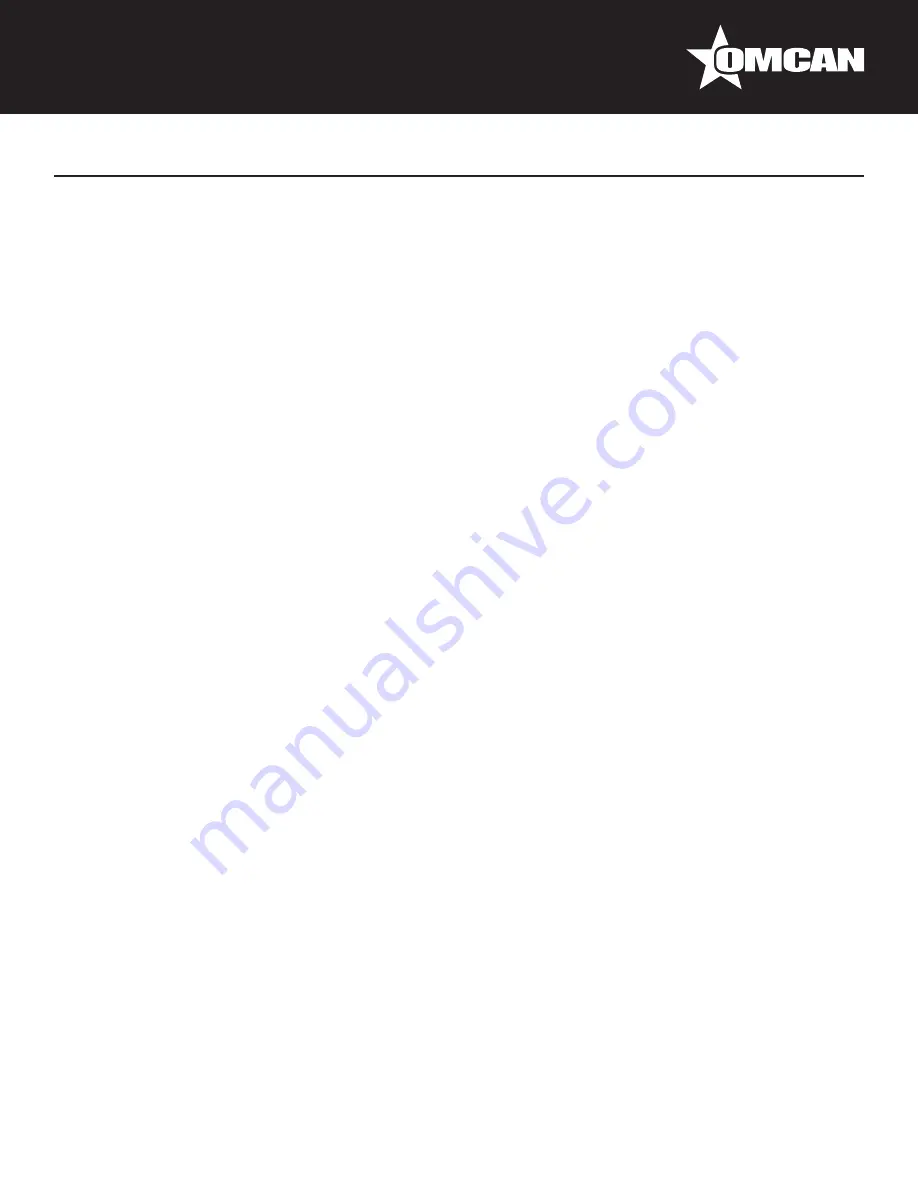
10
Maintenance
main fuse board and unplug the machine.
•
Never touch the knife-edge with your hands. Always use gloves made of metallic netting.
•
With the wrenches provided unscrew the cap nut at the end of the knife shaft in a CLOCKWISE direction
(Pg. 13, Fig. 4 - step 1). Pull the entire assembly towards the left until you have separated it from the shaft
(Pg. 13, Fig. 5). If necessary, hit the base of the knife holder several times with a plastic mallet to remove it;
never hit the knives themselves with any instrument or tool.
To reassemble the cutting head, repeat the dismantling operations in reverse order, taking into account the
assembly recommendations listed in the section below.
DISMANTLING THE KNIVES SEPARATELY
In order to remove the knives separately while leaving the knife-head assembly attached to the shaft, proceed
as follows:
•
Disconnect the machine by turning off the main switch; for added safety, turn off the isolating switch in the
main fuse board and unplug the machine.
•
Never touch the knife-edge with your hands. Always use gloves made of metallic netting. With the
wrenches provided unscrew the cap nut at the end of the knife shaft in a CLOCKWISE direction (Pg. 13,
Fig. 4). With the same wrenches, but using two sides of the same width, unscrew (also in a CLOCKWISE
direction) and remove the knife fixing nut ring.
• Remove the knives and the compensating rings separately, remembering first to make a note of their order
and position (Pg. 12, Fig. 2).
To reassemble the knife head, repeat the dismantling operations in reverse order, making sure of the following:
• The fixing nut for the knife grouping is not tightened completely until the knives have been turned (with the
help of a bar made of a pliant material) to ensure that the knives do not touch or rub against the bowl or the
lid.
•
Adjust each knife so that there is a 2-3 mm space between each knife and the bowl (Pg. 12, Fig. 3). For
this adjustment we recommend using a space gauge made of a pliant material (cardboard, cork, etc.) to
follow the path marked by the end of each knife and a plastic mallet to adjust the knives accordingly.
•
For safety reasons, do not try to leave a space of 0 mm between the knives and the bow. This is not
recommendable because the strong vibrations which result under certain operating conditions could cause
one or more of the knives to make contact with the bowl.
• The knives are equipped with a flange which functions as a knife stop. During installation, this flange
should stay in contact with the knife holder.
• Once the knife-head has been reassembled correctly, tighten both the head and the fixing nut for the knife
assembly with the wrenches provided.
SHARPENING THE KNIVES
If the quality of the cutting/chopping should noticeably diminish, the knives should be sharpened by a qualified
professional, paying special attention to maintaining the length and weight of each of the knives in a given
group or head. The knives should only be sharpened by an expert specialized in the sharpening of tempered
knives. Before sharpening the knives, consider whether the resulting reduction in size will be substantial
enough to warrant the installation of completely new knives. In principle, the external knife-edge should not






































